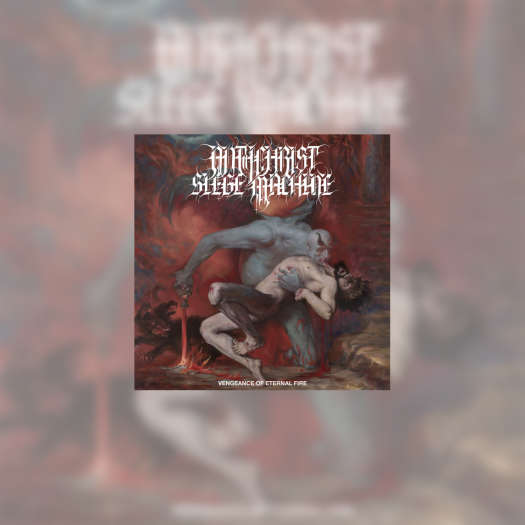"Moulin Rouge" is perhaps the first ever postmodern epic musical. Director Baz Luhrmann builds upon his previous lush and fantastical work in "Strictly Ballroom" and "William Shakespeare's Romeo and Juliet," taking the elevated sensual state of those films to the furthest extreme possible. The music is a pastiche of contemporary pop songs that are reinterpreted and pieced together to work within the film's narrative, both as staged performances and, as musicals are wont to do, in moments of heightened emotion where the characters have no choice but to burst out in song.
Set at the infamous Moulin Rouge nightclub in the bohemian village of Montmartre at the turn of the 20th century, the film weaves the tragic tale of a love affair between penniless writer Christian (Ewan McGregor) and stunning courtesan Satine (Nicole Kidman), who is beholden to a rich and influential Duke (Richard Roxburgh). The Duke agrees to fund a new play written by Christian and starring Satine, unwittingly facilitating their relationship under his very nose. The play within the film mirrors and mimics the love triangle occurring in and around its rehearsal, while attempting to espouse the bohemian principles of truth, beauty, freedom, and (above all) love.
The visual spectacle of "Moulin Rouge" is opulent and enveloping. It begins as an eye-popping sensory overload as, in tandem with Christian, we are introduced to the decadent, heady world of the night club. This first section is almost too overwhelming, as the sounds and images pile upon each other too quickly to be fully processed by the brain. Though some of the aggressively sensual style remains throughout the film, this frenetic editing pace thankfully gives way a little once the story gets going. The incredible visual design is combined with outstanding staging and choreography to create some of the most intense and enjoyable dance numbers witnessed on film in a long time.
The performances are almost all remarkably good, and augmented by the astounding fact that the actors did all of their own singing. Ewan McGregor is perfect as the young romantic writer experiencing life and love for the first time. Nicole Kidman is by turns powerful, seductive, and hilarious, giving her best performance in a long time. Richard Roxburgh's Duke is appropriately evil, the kind of villain an epic love story really needs. Jim Broadbent's Zidler, the proprietor and host of the Moulin Rouge, is a bizarre but entirely apt combination of the lascivious, comic, and tender. Only John Leguizamo's Toulouse Lautrec misses the mark, showing a one dimensional character made up only of surface quirks and glitches.
The greatest thing about the film is that it manages to indulge the fun campiness of the material and the style to its utmost, while at the same time portraying the love story and the songs that accompany it with genuine heart and affection. The astonishing result is that a normally cynical audience can be won over enough by the film's clever self-referential nature that it can engage emotionally in the characters and their plight without feeling cheap and manipulated when all is said and done.
ON THE DVD:
"Moulin Rouge" is a film perfectly suited to the DVD format, and this extensive issue is sure to satisfy cinephiles who seek deep analysis as well as those who simply enjoyed the movie. Its lush, eye-popping visuals and spectacular sonic construction are perfect for DVD quality. In addition, director Baz Luhrmann has made sure to dissect every aspect of the production from several different angles. Though the standard "making of" documentary is perfunctory, the more specific sections dealing with music, writing, production design and choreography all delve much deeper into the specifics often geekily so of the production. As well, while watching the film itself, the option of exploring and examining how individual sequences were constructed is also offered.
But what comes through most clearly with this is that "Moulin Rouge" is a film best absorbed by seeing it more than once so much is happening visually that it's hard to catch your breath initially, and while its postmodern pastiche may have seemed strange initially, its layers are more rewarding as you peel them back. James Keast
Set at the infamous Moulin Rouge nightclub in the bohemian village of Montmartre at the turn of the 20th century, the film weaves the tragic tale of a love affair between penniless writer Christian (Ewan McGregor) and stunning courtesan Satine (Nicole Kidman), who is beholden to a rich and influential Duke (Richard Roxburgh). The Duke agrees to fund a new play written by Christian and starring Satine, unwittingly facilitating their relationship under his very nose. The play within the film mirrors and mimics the love triangle occurring in and around its rehearsal, while attempting to espouse the bohemian principles of truth, beauty, freedom, and (above all) love.
The visual spectacle of "Moulin Rouge" is opulent and enveloping. It begins as an eye-popping sensory overload as, in tandem with Christian, we are introduced to the decadent, heady world of the night club. This first section is almost too overwhelming, as the sounds and images pile upon each other too quickly to be fully processed by the brain. Though some of the aggressively sensual style remains throughout the film, this frenetic editing pace thankfully gives way a little once the story gets going. The incredible visual design is combined with outstanding staging and choreography to create some of the most intense and enjoyable dance numbers witnessed on film in a long time.
The performances are almost all remarkably good, and augmented by the astounding fact that the actors did all of their own singing. Ewan McGregor is perfect as the young romantic writer experiencing life and love for the first time. Nicole Kidman is by turns powerful, seductive, and hilarious, giving her best performance in a long time. Richard Roxburgh's Duke is appropriately evil, the kind of villain an epic love story really needs. Jim Broadbent's Zidler, the proprietor and host of the Moulin Rouge, is a bizarre but entirely apt combination of the lascivious, comic, and tender. Only John Leguizamo's Toulouse Lautrec misses the mark, showing a one dimensional character made up only of surface quirks and glitches.
The greatest thing about the film is that it manages to indulge the fun campiness of the material and the style to its utmost, while at the same time portraying the love story and the songs that accompany it with genuine heart and affection. The astonishing result is that a normally cynical audience can be won over enough by the film's clever self-referential nature that it can engage emotionally in the characters and their plight without feeling cheap and manipulated when all is said and done.
ON THE DVD:
"Moulin Rouge" is a film perfectly suited to the DVD format, and this extensive issue is sure to satisfy cinephiles who seek deep analysis as well as those who simply enjoyed the movie. Its lush, eye-popping visuals and spectacular sonic construction are perfect for DVD quality. In addition, director Baz Luhrmann has made sure to dissect every aspect of the production from several different angles. Though the standard "making of" documentary is perfunctory, the more specific sections dealing with music, writing, production design and choreography all delve much deeper into the specifics often geekily so of the production. As well, while watching the film itself, the option of exploring and examining how individual sequences were constructed is also offered.
But what comes through most clearly with this is that "Moulin Rouge" is a film best absorbed by seeing it more than once so much is happening visually that it's hard to catch your breath initially, and while its postmodern pastiche may have seemed strange initially, its layers are more rewarding as you peel them back. James Keast




